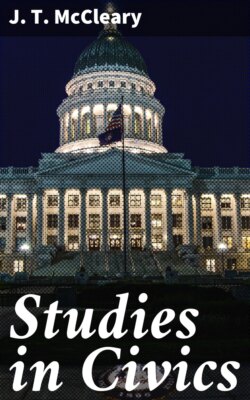Читать книгу Studies in Civics - J. T. McCleary - Страница 26
На сайте Литреса книга снята с продажи.
PROCEEDINGS IN EXAMINATION.
ОглавлениеNeed of Examination.—Over crimes punishable by fine greater than $100 or imprisonment for more than three months, a justice of the peace usually has no jurisdiction of trial. The action must be tried in the district court, on the indictment of a grand jury. But in the meantime the perpetrator of a crime might escape. To prevent this, the accused may be arrested and examined by a justice of the peace, to ascertain whether or not there are sufficient grounds for holding him for trial.
Proceedings.—The preliminary proceedings are precisely like those in case of a trial. Upon complaint duly made a warrant is issued, and the accused is arrested and brought before the justice. In the presence of the accused, the magistrate examines the complainant and witnesses in support of the prosecution, upon oath, "in relation to any matter connected with such charge which may be deemed pertinent."
Rights of Accused.—The accused has a right to have witnesses in his behalf, and to have the aid of counsel, who may cross-examine the witnesses for the prosecution.
The Result.—If it appears upon examination that the accused is innocent of the crime, he is discharged. If his guilt seems probable, he is held to await the action of the grand jury. In the case of some offenses bail may be accepted. But if no suitable bail is offered, or if the offense is not bailable, the accused is committed to jail. Material witnesses for the prosecution may be required to give bonds for their appearance at the trial, or in default thereof may be committed to jail.
Reports.—The justice makes a report of the proceedings in the examination, and files it with the clerk of the court before which the accused is bound to appear for trial.
